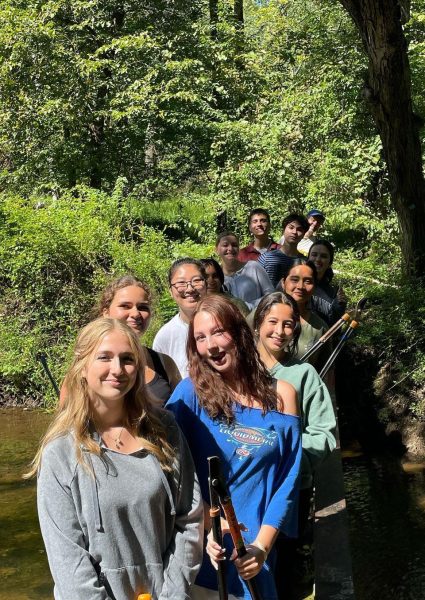Save the Bees, Please
Map of states with laws to protect bees and other pollinators. Stateline 2015
The warm months of spring and summer along the East Coast signify buzzing bees flitting around our gardens. However, this familiar scene is in danger of vanishing forever— and it will be almost entirely our own fault.
Bees are a fundamental part of not only our dreamy springtime perspectives and honey sources, but vital to every ecosystem and economy.
According to Premier Tech Home and Garden, “At least 30% of the world’s crops and 90% of all plants require cross-pollination to spread and thrive,” which makes all bee species essential to human survival and our complex economies all rely on the basis of bee pollination.
That is a significant chunk of our food source, contingent on the fact that we keep the pollinators responsible alive.
Bees’ obvious significance to nature and humans should, in theory, correlate with a thriving bee population that we have a part in maintaining. Our local communities rely on these insects flourishing, but quite the opposite is occurring in a strange phenomenon.
The scary fact is that this recurring pattern of fewer and fewer bee sightings is becoming our new normal. Communities across the country and globe are experiencing these bee ghost towns.
Merrit Kennedy, writing for National Public Radio, said, “the bee was found in 31 states and Canadian provinces before the mid-to late-1990s… But since 2000, it has been reported in only 13 states and Ontario, Canada.”
From honey makers to the bumbles, all bees are extremely susceptible to a slew of attacks: climate change, pesticides/insecticides, habitat destruction, mites and diseases. Collectively, these factors cumulate to cause Colony Collapse Disorder (CCD), a serious epidemic.
These facts led to the addition of the bumblebee to the United States Endangered Species list just two years ago.
The National Pesticide Information Center reports that since its first reporting in 2006, CCD has caused “high colony losses where the adult honeybees simply disappeared from the hives, almost all at the same time.”
This phenomenon should rattle all of us, not just beekeepers and environmentalists.
Though some contributors to CCD may seem completely out of our control, climate change effects along with the use of extremely detrimental herbicides and insecticides—like neonicotinoids—rest solely in our laps.
Despite the non-direct kills which allowed this pesticide to be sold on shelves, it “may impact bees’ ability to forage for nectar, learn and remember where flowers are located, and possibly impair their ability to find their way home to the nest or hive,” reported Texas A&M Agrilife Extension in its column “Bugs in the City.”
Herbicides and pesticides can also weaken bees’ immune systems and make them more susceptible to mites and diseases.
Sarah Sloan writing for Inverse reported that Europe has already banned neonicotinoids in 2018, an example we need to emulate without further delay.
Until a complete banning, however, we can take a few steps with careful usage or avoidance of purchasing harmful insecticides or herbicides for home gardens at all.
Texas A&M suggests to “follow the label directions carefully, restrict neonicotinoid during times when bees are not foraging, and treat only those individual plants which need treatment for a known pest infestation.”
If we do not reduce climate change and chemical usage for our own sake, we need to do so for all bee species’ survival. Keeping other shaky bee species off the Endangered Species list and protecting the ones that currently reside on it is completely in our power. Our integral buzzing friends need assistance from us, especially since we are the ones that put them in this grave situation to begin with.






